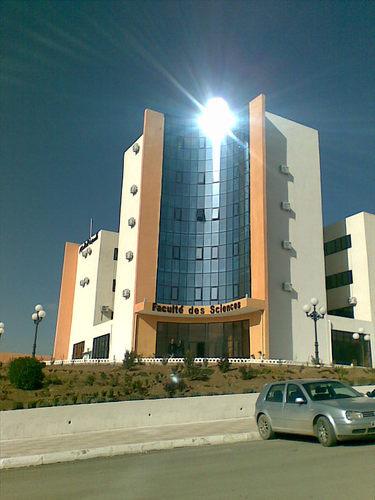|
| Titre : |
Thermodynamics Problem Solving in Physical Chemistry : Study Guide and Map |
| Type de document : |
document ÃĐlectronique |
| Auteurs : |
Murphy Kathleen E. |
| Editeur : |
Boca Raton : CRC Press |
| AnnÃĐe de publication : |
2020 |
| ISBN/ISSN/EAN : |
978-1-00-003024-2 |
| Langues : |
Français (fre) |
| CatÃĐgories : |
BibliothÃĻque numÃĐrique:Chimie
|
| Mots-clÃĐs : |
Thermodynamics Mathematics:Problems, exercises Chemistry, Physical :theoretical Mathematics:Problems, exercise |
| Index. dÃĐcimale : |
541.369 Thermodynamique chimique |
| RÃĐsumÃĐ : |
Thermodynamics Problem Solving in Physical Chemistry: Study Guide and Map is an innovative and unique workbook that guides physical chemistry students through the decision-making process to assess a problem situation, create appropriate solutions, and gain confidence through practice solving physical chemistry problems. The workbook includes six major sections with 20 - 30 solved problems in each section that span from easy, single objective questions to difficult, multistep analysis problems. Each section of the workbook contains key points that highlight major features of the topic to remind students of what they need to apply to solve problems in the topic area. Key Features: Provides instructor access to a visual map depicting how all equations used in thermodynamics are connected and how they are derived from the three major energy laws. Acts as a guide in deriving the correct solution to a problem. Illustrates the questions students should ask themselves about the critical features of the concepts to solve problems in physical chemistry Can be used as a stand-alone product for review of Thermodynamics questions for major tests. |
| Note de contenu : |
Table of Contents
Preface
Author
Workbook
1 Gases and Gas Laws
2 The First Law of Thermodynamics: Work (PV) and Heat, as âU and âH
3 Second and Third Law of Thermodynamics, âS
4 Free Energy (âG), Helmholtz Energy (âA), and Phase Equilibrium
5 Free Energy (âG) of Mixing, Binary Liquid Mixtures, Colligative Properties, and Activity
6 Free Energy, Equilibrium Constants, and Electromotive Force
Final Answers
Answers to Example Problems
Final Answers and Hints
Part 1: Gases and Gas Laws
Part 2: First Law of Thermodynamics â Work (Pv), Heat, Îu and Îh
Part 3: Second and Third Laws â Entropy
Part 4: Free Energy (âG), Helmholtz Energy (âA), and Phase Equilibrium
Part 5: Free Energy (âG) of Mixing, Binary Liquid Mixtures, Colligative Properties, and Activity
Part 6: Free Energy (âG), Equilibrium, and Electrochemistry
Index |
| Côte titre : |
E-Fs/0017 |
| En ligne : |
https://sciences-courses.univ-setif.dz/login/index.php |
Thermodynamics Problem Solving in Physical Chemistry : Study Guide and Map [document ÃĐlectronique] / Murphy Kathleen E. . - Boca Raton : CRC Press, 2020. ISBN : 978-1-00-003024-2 Langues : Français ( fre)
| CatÃĐgories : |
BibliothÃĻque numÃĐrique:Chimie
|
| Mots-clÃĐs : |
Thermodynamics Mathematics:Problems, exercises Chemistry, Physical :theoretical Mathematics:Problems, exercise |
| Index. dÃĐcimale : |
541.369 Thermodynamique chimique |
| RÃĐsumÃĐ : |
Thermodynamics Problem Solving in Physical Chemistry: Study Guide and Map is an innovative and unique workbook that guides physical chemistry students through the decision-making process to assess a problem situation, create appropriate solutions, and gain confidence through practice solving physical chemistry problems. The workbook includes six major sections with 20 - 30 solved problems in each section that span from easy, single objective questions to difficult, multistep analysis problems. Each section of the workbook contains key points that highlight major features of the topic to remind students of what they need to apply to solve problems in the topic area. Key Features: Provides instructor access to a visual map depicting how all equations used in thermodynamics are connected and how they are derived from the three major energy laws. Acts as a guide in deriving the correct solution to a problem. Illustrates the questions students should ask themselves about the critical features of the concepts to solve problems in physical chemistry Can be used as a stand-alone product for review of Thermodynamics questions for major tests. |
| Note de contenu : |
Table of Contents
Preface
Author
Workbook
1 Gases and Gas Laws
2 The First Law of Thermodynamics: Work (PV) and Heat, as âU and âH
3 Second and Third Law of Thermodynamics, âS
4 Free Energy (âG), Helmholtz Energy (âA), and Phase Equilibrium
5 Free Energy (âG) of Mixing, Binary Liquid Mixtures, Colligative Properties, and Activity
6 Free Energy, Equilibrium Constants, and Electromotive Force
Final Answers
Answers to Example Problems
Final Answers and Hints
Part 1: Gases and Gas Laws
Part 2: First Law of Thermodynamics â Work (Pv), Heat, Îu and Îh
Part 3: Second and Third Laws â Entropy
Part 4: Free Energy (âG), Helmholtz Energy (âA), and Phase Equilibrium
Part 5: Free Energy (âG) of Mixing, Binary Liquid Mixtures, Colligative Properties, and Activity
Part 6: Free Energy (âG), Equilibrium, and Electrochemistry
Index |
| Côte titre : |
E-Fs/0017 |
| En ligne : |
https://sciences-courses.univ-setif.dz/login/index.php |
|  |


 Ajouter le rÃĐsultat dans votre panier Affiner la recherche
Ajouter le rÃĐsultat dans votre panier Affiner la recherche


